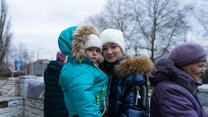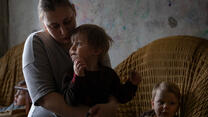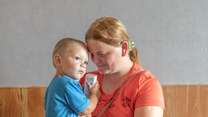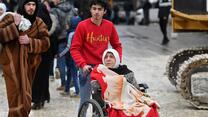
This year Ukraine will battle a severe winter. As temperatures plummet, Ukraine is suffering from intensified barrages of missile strikes and widespread destruction. The combination of ongoing armed conflict, destroyed infrastructure and harsh weather conditions can make life incredibly tough for the people in affected areas.
Approximately 3.7 million people in Ukraine have been internally displaced and are facing freezing winter conditions after being forced to flee their homes. Many are taking shelter in damaged buildings and have limited access to food, electricity and heat.
More than 18 million people, including 4 million children, are in need of humanitarian assistance in Ukraine.
Since February 2022, the International Rescue Committee (IRC) has been on the ground working closely with partner organizations to reach people in need. We are scaling up our response as the weather gets colder and are distributing essential winter items, including blankets and heaters.
Update: The IRC is deeply concerned about intensified fighting in Kupyansk and is actively responding to the needs of children evacuated from the area. The IRC is working in a reception hub and dormitories in Kharkiv, providing primary health care to evacuated families, as well as psychological first aid to help children cope with the trauma they have experienced.
Learn more about the war’s impact on Ukrainians and people around the world.
How cold is winter in Ukraine?
Winter in Ukraine is snowy and cold, with temperatures reaching well below freezing. During the winter months, which run from December to March, the country has an average temperature ranging between 23 degrees Fahrenheit (-4.8 C) and 36 degrees Fahrenheit (2 C). In some regions where the IRC works, temperatures regularly drop to -5 degrees Fahrenheit (-21.6 C).
What are conditions like in Ukraine?
Eastern Ukraine has been shaken by conflict since 2014, and the situation in the country has deteriorated significantly since the full-scale war broke out in February 2022. Attacks have damaged almost 50% of Ukraine’s energy infrastructure, leaving more than 7 million Ukrainians without electricity. Missiles have struck medical facilities, homes, schools and other pieces of civilian infrastructure.
An IRC assessment found that 25% of respondents reported not having access to sufficient heating, and more than 60% reported that their houses are in need of repair. A lack of power, heat and shelter becomes life-threatening as temperatures plunge well below freezing. The continuation of conflict has exacerbated conditions.
Across the country, 18 million people are in need of humanitarian assistance.
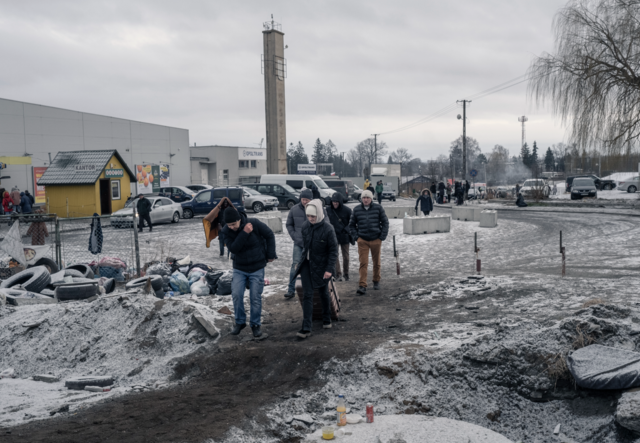
What will Ukrainians need to survive winter?
More funds and immediate assistance are needed to minimize the humanitarian crisis in Ukraine this winter. Ukrainians need access to cash, suitable shelter and health services to make it through the cold season.
Millions of Ukrainians have had their homes destroyed by conflict. Now, they’re searching for shelter from violence and the winter elements. Many are staying in buildings that have been damaged by the conflict while whole communities have been left without access to electricity.
The World Health Organization (WHO) warns that conditions in Ukraine will increase rates of frostbite, hypothermia, pneumonia, stroke and heart attack. Those who do fall ill may be unable to access care; there have been over 1,000 attacks on health facilities since the war escalated, with many critical services damaged and destroyed. The October attack on Hroza killed more than 50 innocent civilians.
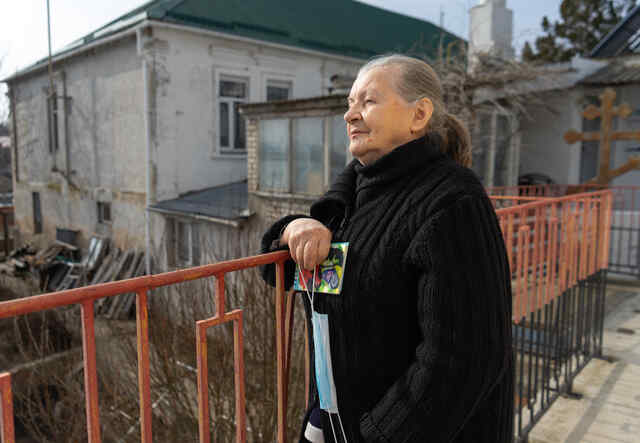
Who is most vulnerable during the winter in Ukraine?
Some 3.7 million Ukrainians are displaced inside their own country. Having fled their home to seek safety from violence, they are facing a new challenge in surviving the winter months.
Displaced Ukrainians were forced to quickly leave their homes, many of them bringing only what they could carry or pack into a car. They are taking shelter where they can find it, often in buildings unsuitable for freezing temperatures. Many who fled did not bring cold weather clothing or blankets with them.
We are witnessing an increased number of attacks on critical infrastructure, even in places that had been previously been considered as relatively safe. Damaged homes and power grids have not been fully repaired, while intense shelling and deaths caused by landmines and other unexploded ordnance are now a daily occurence.

Elderly people are also extremely vulnerable to Ukraine's harsh winter. Elderly people tend to be less mobile and may be physically unable to leave their homes to seek safety. As conflict and winter disrupt the community around them, they often lose access to everyday services they rely on for food and care.
Limited electricity and communication services have also made it more difficult for families to take care of their parents and grandparents. At times, they may not even know if their family member is still alive.
How will the IRC help Ukrainians survive winter?
The IRC is working with local partners to deliver cash assistance directly to families in need so that recipients can independently choose how to meet their needs.
In places where in-kind items are difficult to obtain, the IRC is distributing blankets, sleeping bags, power banks, and will equip homes in Kherson with heaters and fuel. In areas close to the frontlines, we will provide shelter materials as well as PVC and plywood materials to seal holes in roofs, walls and windows.
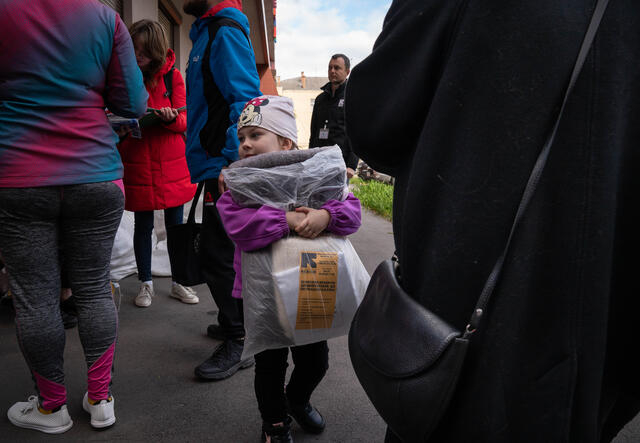
Aside from our winter response, the IRC distributes cash, personal hygiene products like toothbrushes and soap, supports health facilities and provides health and legal consultations to displaced Ukrainians whose homes have been damaged in the war. The IRC and our partner organizations have also set up "safe healing and learning spaces" for displaced women and children and are working to ensure children are protected and welcomed in the communities where they have sought safety.
Find out more about how the IRC is helping Ukrainians and what you can do to help.
